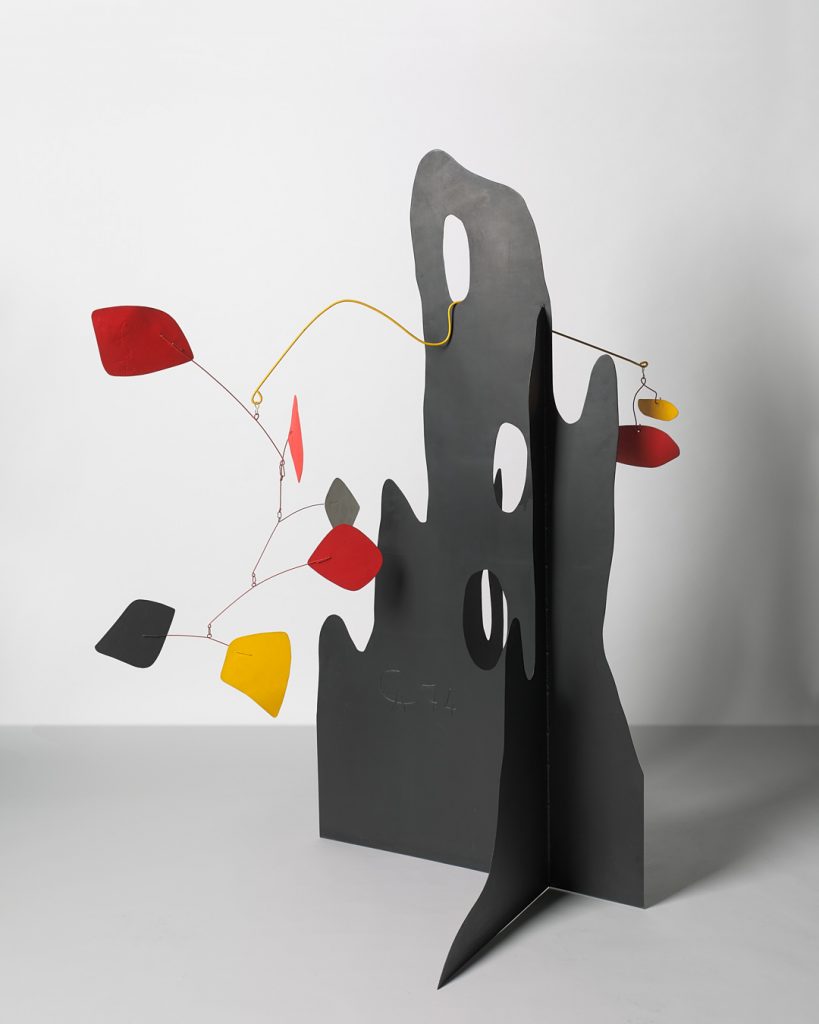
Communication with the purpose of culturally promoting artists included in the Fundación María Cristina Masaveu Peterson Collection, works protected by intellectual property rights. Their total or partial reproduction or processing by any means, or their transmission or cession in any form is forbidden without the authorisation of the holder of the rights to the works
© Alexander Calder. VEGAP, Madrid, 2025
CRAG
TECHNICAL DATA
Author: Alexander Calder (Lawnton, Pensilvania, 1898-Nueva York, 1976)
Title: Crag
Year: 1974
Medium: wire, rods, sheet metal and paint
Dimensions: 198 x 157,5 x 101,6 cm
Crag belongs to a series of the same name executed in 1974 and epitomises the artist’s trajectory and iconic language. It is a standing mobile, as these pieces are usually defined, in which a two-metre-high black biomorphic structure rises from the floor in the manner of a monolith, rock or crag, while a series of red, yellow, white and black abstract forms hang from a yellow-painted wire that rests in a delicate balance on one of the monolith’s hollows. Solid, sinuous and static, this promontory contrasts in both its stability and palette with the brightly coloured moving component that sways with the slightest breeze, activating the surrounding space and the shadows cast over it while injecting energy and colour. Some authors have interpreted this dominant dark form with the crag of the title. Made from the artist’s signature black-painted sheet metal, it is radically abstract, and yet the steep sloping curves and perforations suggest geological dimensions, such as peaks, valleys and rocky terrains. It has even been associated with the expression of a dream or the silhouette of a mysterious entity in the night. That would establish a parallel with his initial embrace of surrealism and tie in closely with the Critters, stabiles fashioned like human figures which Calder exhibited alongside various pieces from the Crag series at the Perls Galleries in New York (15 October–16 November 1974), the Galerie Maeght in Paris (22 January–23 February 1975) and the Galerie Maeght in Zurich (September–October 1975).
Although the inclusion of this particular piece in those exhibitions cannot be reliably documented, it nevertheless comes originally from the Galerie Maeght in Paris, suggesting that it may at least have been present in that show. In 1981 it passed to the Pace Gallery in New York, where it was purchased the same year by a private collector. Thereafter it was auctioned at Sotheby’s, New York, on 14 November 2006 (Lot 66) and was finally acquired by the Fundación María Cristina Masaveu Peterson at Christie’s, New York, on 10 November 2023 (Lot 127).
